Digital Out-Of-Home or DOOH Advertising present a major opportunity for marketers and publishers to reach target audiences in a specific, real-world context and optimize revenue.
Digital Out-Of-Home (DOOH) advertising seems to take a steep upsurge. In 2022, this industry has been evaluated at a massive $9.2 billion. There’s no surprise in knowing that advertisers are scramming for this renewed opportunity.
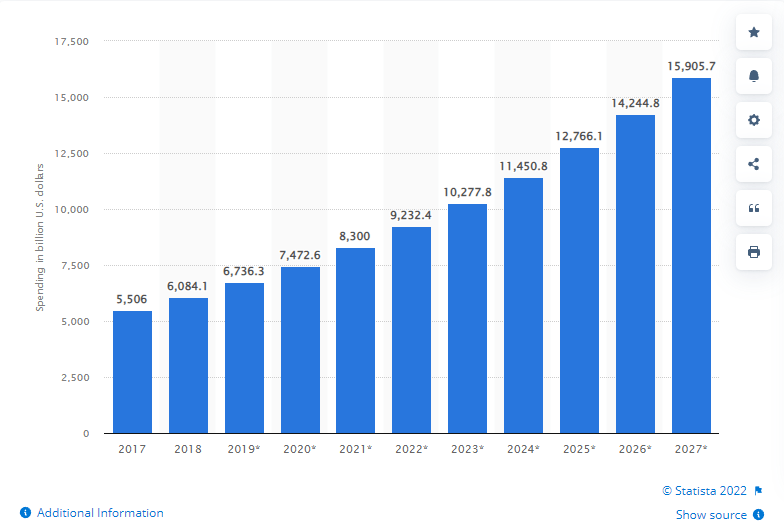
In fact, in 2023 itself, the (DOOH) Digital Out of Home ad spending rates are said to be increased by 19.2%. So, what is this new marketing secret that has gotten everyone on their tiptoes?
Digital Out-Of-Home (DOOH) Ads – What are They?
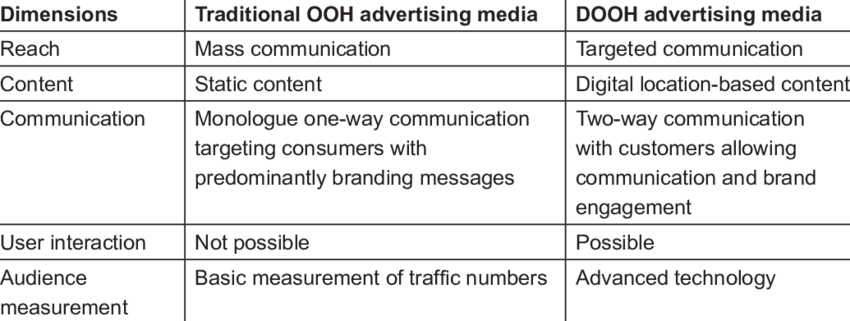
Out-of-Home (OOH) Advertising is a concept of outdoor advertising where advertisers try and reach out to their target consumers outside their houses.
These can be traditional billboards, bus stop ads, and so on. These are different from mobile advertising, as these ads catch your eye when you’re out on the road, maybe stuck in traffic, on your way to the office, in the metro, in elevators, and so on.
Digital Out of Home Advertising simply puts a spin on this traditional outlook and attempts to automate this process and targeting more effectively.
In the same way, Digital Out of Home advertisements allows you to reach out to customers through their devices, targeting your product by location, demography, shopping preferences, and so on.
Similarly, DOOH Advertising also works with concepts of tracking, geo-fencing, retargeting, attribution, personalization, and so on.
Why DOOH Advertising a Wise Choice For Your Business?

Whether you’re a regular Digital out-of-home advertisement publisher or not, there’s a range of benefits this ad format offers that might change your mind.
Improve Revenue Through Great Pricing Opportunities
Digital Out of Home advertising offers more revenue through better pricing dynamics. You can opt for real-time bidding and advertisers that are willing to pay quite profitably, at least over the regular pre-booked ad rates. This could be substantially more profitable than standard, pre-booked banner rate cards.
Pricing Models for DOOH Ads
There are no strict bound rules when it comes to the pricing models for Digital Out of Home ads. One can control the price according to location, timing, size, or even demand. For instance, the price for daytime rush hour advertising will be more than maybe advertising at night. However, there are also a few other options, such as paying according to CPM or SOV.
Cost Per Impression (CPM)
CPM, as we know, is a cost per impression; however, with DOOH ads, one can never get an exact number of impressions. Thus this is more an average calculation, say, based on the location and population.
Share of Voice (SOV)
SOV, on the other hand, is Share of Voice, and this concept requires advertisers to buy a certain percentage of the ad inventory.
Say there is a total of 6 ad slots in the billboard for each loop. If an advertiser occupies one of these slots, their advertising is shown accordingly. To be more effective, an advertiser can buy more slots, and the publisher sets a fixed price for each.
Better Earning Opportunity with DOOH Ads
According to industry standards, the eCPMs for DOOH ads are around $5-$15. These values are variable but are much higher than standard banner advertisements that deliver an average of $0.30 – $1.30 or $1.50. The ad revenue through DOOH ads mainly depends on the factors such as:
- The Size of your Audience
- Your Product Type
- The number of Ads
- Ad Fill Rate
- Ad Quality
Additionally, Digital Out of Home ads can be activated in less than 72 hours compared to OOH ads, which take weeks for ad activation. Publishers and Advertisers using DOOH ad campaigns can use dynamic creative optimization (DCO) to optimize the ad creative according to regions, weather patterns, audience types, and according to spikes in demand.
Also Read: A Comprehensive Guide to Increasing Average CPM
What comes next?
No Banner Blindness
Ads on mobile devices are easily ignored because of banner blindness. Especially with banner ads, they’re more prone to be missed. However, big and vibrant DOOH ads aren’t missable. Thus, these attract advertisers more as they’re able to reach out to a wider and newer audience, which also opens up a great opportunity for publishers to set premium ad inventory rates.
Engaging Ad Formats
As established, DOOH ads are hard to miss. They also provide great flexibility in design and innovation. One can make them as captivating as possible, and traditional OOh Ads can never win over that. DOOH advertising enables advertisers to experiment with movement, space, and concepts, even creating ads that ‘literally’ pop out.
Also Check: Innovative Ad Formats For Publishers
Privacy Concerns in Check
In this digitally awakened age, users are getting more and more concerned about their privacy, hence demanding drastic measures from companies like Google to abolish cookies. However, DOOH doesn’t work on personal user information, keeping the consumers of the ad safe and out of the grasp of the advertisers.
Cutting Down on Manual Work
With the help of a digital server, your flexibility with DOOH advertising becomes ultimate, which can help you in terms of revenue. For instance, you can control what ad to show when and for how long. And effortlessly, you can change it within the hour and have total control of the ad rotation.
Ad Blockers Can’t Come to Play Here
It is of no little mystery that as days go by, the number of users reaching out for ad blockers is becoming more and more. This way, mobile advertising can even someday become obsolete. However, that is not a risk you need to worry about with DOOH Marketing.
Where Can You See DOOH Ads? Real-Time Examples
Digital Out of Home (DOOH) Advertising offers optimum opportunities. It offers an array of targeting options – you can choose the day and time for when to display your ad (for eg. a rush hour), or maybe the screen location or the geolocation, according to weather, control how often it is displayed and with the help of first-party data one can also display their ads accordingly on IoT devices such as on car dashboards.
This is why plenty of companies and businesses opt for DOOH marketing, and here’s a list of a few.
Example 1: eBay using Digital Out of Home (DOOH) Advertising
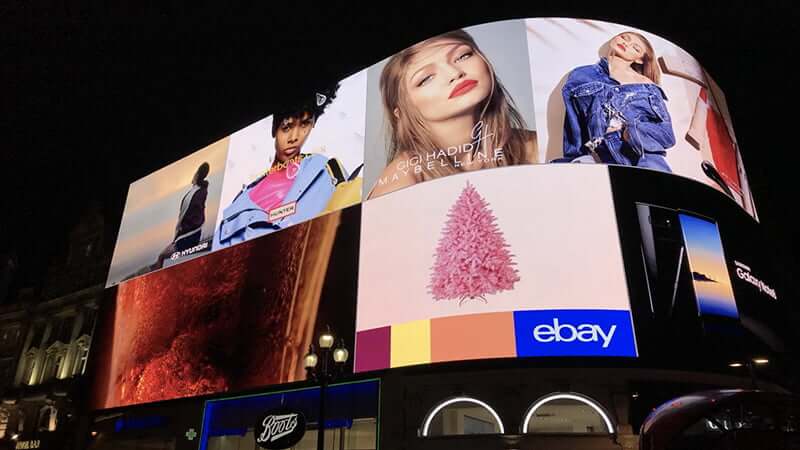
The online marketplace eBay launched its DOOH ad campaign back in 2018 on outdoor digital signs across the UK that display weather-attuned messages. The campaign featured advertising messages that change according to weather conditions.
For instance, if it’s summer, visual ads for gardening products might be shown. The rainy and cloudy conditions can prompt ads for indoor do-it-yourself projects.
Example 2: Walmart In-store Digital Out of Home Advertising
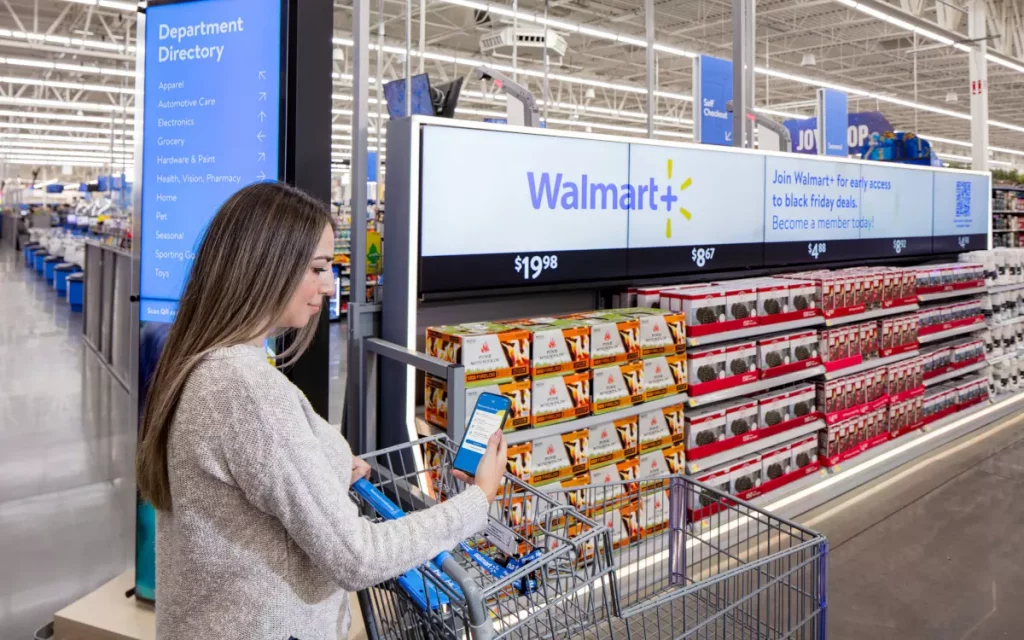
Top consumer-goods retailer Walmart has primarily focused on digital media to reach their target audiences at scale. With the right investments in interconnected DOOH screens, they now offer valuable incremental reach and impressions.
Thus, in-store DOOH ads for Walmart are now offering a massive network of digital touchpoints, a full integrated ecosystem on all major DSPs and media buyers to rely on. It also provides vast new media audiences with TV networks and leading digital platforms.
Example 3: Lasik MD’s Elevator Digital OOH Ads
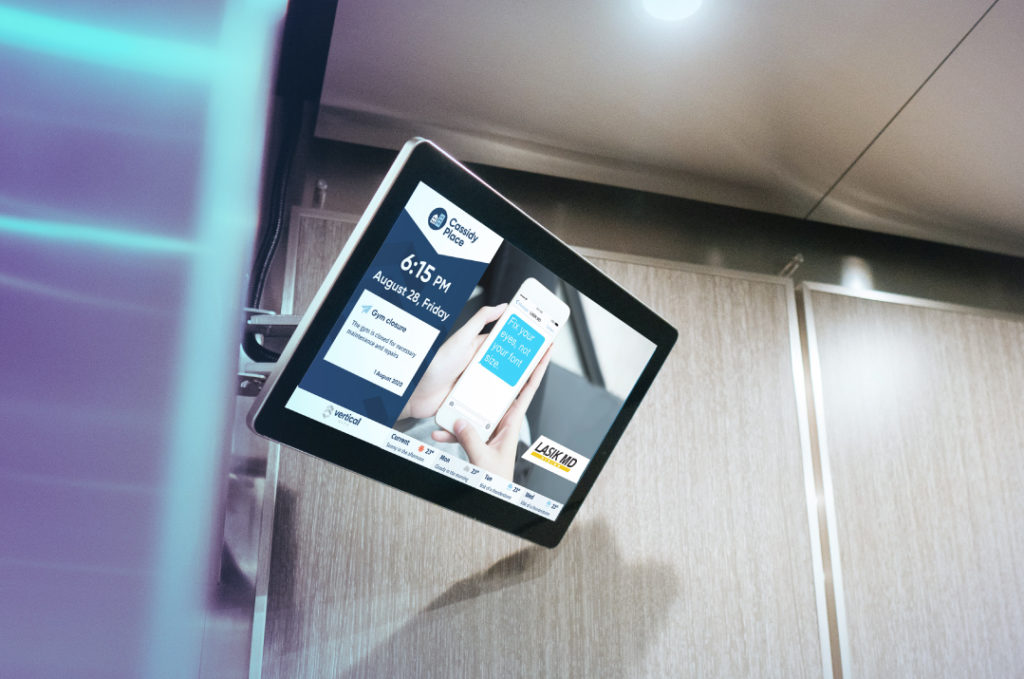
Lasik MD make the best use of Digital Out-of-Home advertising to target their laser eye surgery candidates. The technology recognized if a person in the elevator was wearing glasses or not and updated the data of candidates accordingly. The ad’s messaging is updated based on the type of eyewear a particular person was wearing at the time.
Not only did Lasik MD’s digital out-of-home advertisements deliver 11 million targeted impressions to laser eye surgery candidates, but they also maximized campaign engagement by 17% among targeted glasses-wearing elevator riders. The technology also considered the age and gender of the users, which helped MD’s marketing team to segment their results further.
Example 4: National Geographic #SaveTogether DOOH Advertising Campaign
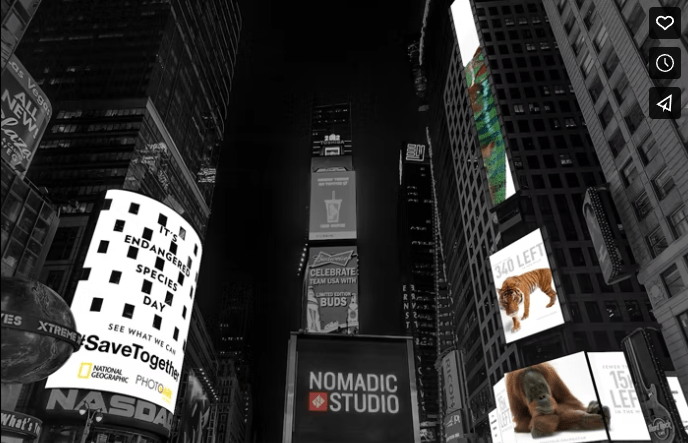
Digital Out of Home advertisement is also used by National Geographic’s “Save Together” campaign to spread its message on the conservation of wildlife and their habitats. Their Digital OOH ad commenced with an hour-long digital spectacular takeover in Times Square.
The interactive ad campaign encourages people to take a selfie at their photo station in Times Square and share it on social media using the campaign’s hashtag, #savetogether. The #SaveTogether campaign continued throughout the summer and donated billboards and DOOH ad formats across the country.
The National Geographic #SaveTogether campaign is an example of the Digital OOH industry contributing to the public good. Most big corporations are opting for Digital Out of Home advertising and opening up exciting revenue-earning opportunities for publishers and advertisers.
What’s Next for Digital Out-of-Home Publishers
We are simply at the onset of the rise of DOOH ads. And big corporations are already revolutionizing this market with their out-of-the-box creations. No other digital channel can prove as powerful as DOOH advertising, only one must know how to utilize it fruitfully.
As an advertiser, the prices may be overwhelming, but the ROI can be better than what you could even imagine. And for publishers, no other advertising media pays as well as DOOH advertising can. It is one of the top channels high in demand for advertisers, which you being a publisher, can strategize to your benefit. So get digital out of home with your advertising and steer ahead of your competition.
Looking for high-impact ad formats? We help publishers create an ad strategy that drives performance across all devices and optimize ad revenue.
Digital Out-of-Home Ads Related FAQ
Transit advertising is the most popular mode taken up by plenty of corporations. Even advertisers who aren’t completely aware of the possibilities of DOOH advertising are aware of transit advertising i.e. displaying ads in modes of public transportation such as airways, metros and trains, and so on, reaching out to people when they’re commuting.
One accurate way that has been discovered in attempts at measuring DOOH impressions is observing a mobile device within the viewing distance and if it is approaching the screen. However, this is yet to be perfected as certain indoor display devices become limited with this approach.
There are no limitations as such on what can be deemed a good screen. It is any digitized display mode available in the environment – whether it is a digital billboard or a network screen, located in a mall, stadium, hospital, etc.

Shubham is a digital marketer with rich experience working in the advertisement technology industry. He has vast experience in the programmatic industry, driving business strategy and scaling functions including but not limited to growth and marketing, Operations, process optimization, and Sales.




![CTV vs OTT Advertising: Which one is Right Pick for Publishers? + [6 Bonus Strategies] Ott vs Ctv](https://www.adpushup.com/blog/wp-content/uploads/2023/02/Featured-Image-270x180.png)


